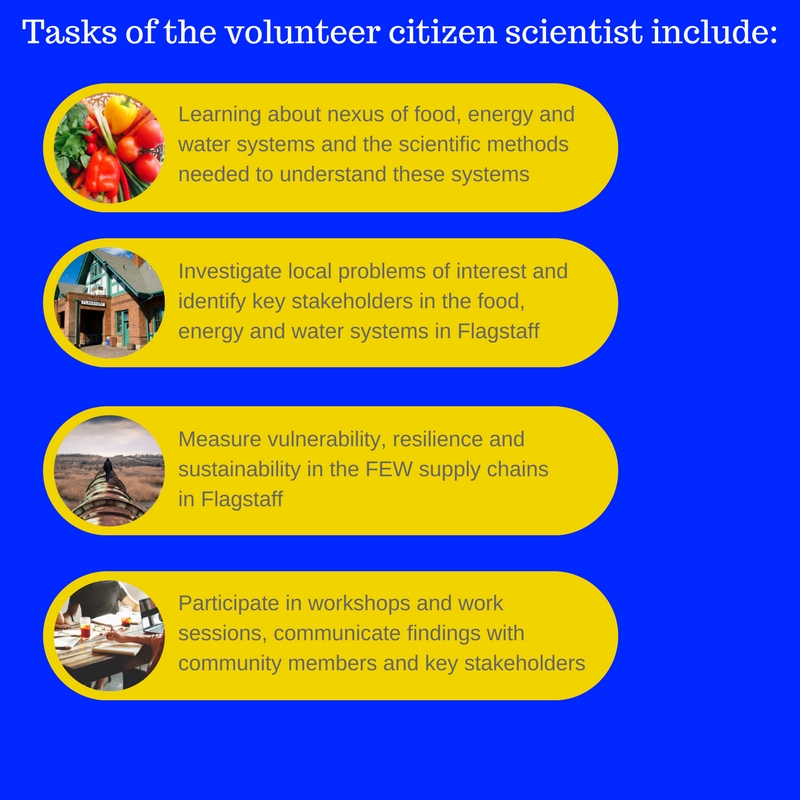By Heidi Toth
NAU Communications
Ask a child where the food on the dinner table comes from and she’ll likely give one of two answers: the farm or the store. In fact, those are likely the answers anyone would give. Few people stop to consider how it gets from the farm to the store.
That source-to-consumer pipeline is critical—more critical than most people realize until it’s disrupted by natural disasters, winter weather or scarcity. Knowing where important resources like food, water and energy come from and how they get here will help plan for those disruptions. That question is behind Northern Arizona University’s new project—mapping those resources with the help of Flagstaff residents.
The project, PLACE4FEWS, is a partnership between the Center for Science Teaching and Learning and the School of Informatics, Computing, and Cyber Systems (SICCS). Recently the National Science Foundation provided NAU with a $463,000 grant to recruit citizen scientists to actively map and study local community food, energy, and water systems (FEWS) for the Flagstaff area.
All residents 18 years of age and older can participate in this unique project by helping provide answers to commonly asked questions: “Where does my food come from?” “How could we best restore resources in the case of an emergency?” or “What are sustainable choices we could make as a community?”
No special skills are required.
“By participating in this research, citizens will have the opportunity to improve the sustainability of the Flagstaff community, learn about where their food, energy and water comes from and help advance the field of citizen science,” project manager Sean Ryan said. “We hope this new data and conversation will enable positive change in our community, through science and awareness.”
The project builds upon and leverages the unique national level supply chain data, maps and visualizations of the FEWSION project, led by SICCS professor Benjamin Ruddell, which maps the nation’s food, energy and water systems for counties and cities. For example, after Hurricane Harvey hit Houston, FEWSION researchers identified how widespread the potential for fuel and food shortages could be given how large of a hub Houston is.
What is missing from FEWSION is an understanding of each neighborhood’s supply of food, energy and water. PLACE4FEWS engages volunteers to collect this information and begin a local conversation between business owners, elected officials and emergency managers about the sustainability and security of those supplies.
The project is seeking citizen volunteers who would like to contribute to cutting-edge research in food, energy and water systems, community sustainability and emergency management of supplies. Flagstaff residents who work in the food, energy and water system fields are welcome to apply (i.e. grocers, utility operators, drivers, emergency responders), as are elected and unelected public officials and staff. College students are welcome to apply as well
Participants will spend about 50 hours over the course of the next 12 months in training workshops and follow-up meetings, collecting data, providing feedback and communicating with community members.
The application form is posted at FEWSION. For questions about volunteering with PLACE4FEWS, please contact Sean.Ryan@nau.edu. The deadline to apply is Dec. 8.




